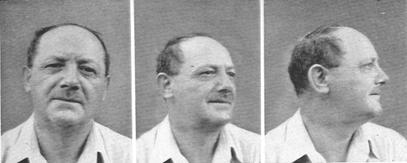Regio X
Regular Member
- Messages
- 1,109
- Reaction score
- 480
- Points
- 0
https://www.researchsquare.com/article/rs-1044480/v1
Abstract
The transition to agriculture occurred relatively late in Eastern Europe, leading researchers to debate whether it was a gradual, interactive process or a colonization event. In the forest and forest-steppe regions of Ukraine, farming appeared during the fifth millennium BCE, associated with the Cucuteni-Trypillian Archaeological Complex (CTCC, 4800-3000 BCE). Across Europe, the Neolithization process was highly variable across space and over time. Here, we investigate the population dynamics of early agriculturalists from the eastern forest-steppe region based on analyses of 20 ancient genomes from the Verteba Cave site (3789-980 BCE). The results reveal that the CTCC individuals’ ancestry is related to both western hunter gatherers and Near Eastern farmers, lacks local ancestry associated with Ukrainian Neolithic hunter gatherers and has steppe ancestry. An Early Bronze Age individual has an ancestry profile related to the Yamnaya expansions but with 20% ancestry related to the other Trypillian individuals, which suggests admixture between the Trypillians and the incoming populations carrying steppe-related ancestry. A Late Bronze Age individual dated to 980-948 BCE has a genetic profile indicating affinity to Beaker-related populations, detected close to 1,000 years after the end of the Bell Beaker phenomenon during the Third millennium BCE.
Supplementary Tables with Y and mtDNAs:
https://assets.researchsquare.com/files/rs-1044480/v1/be83b4a5450c38c4a77088d7.xlsx
Abstract
The transition to agriculture occurred relatively late in Eastern Europe, leading researchers to debate whether it was a gradual, interactive process or a colonization event. In the forest and forest-steppe regions of Ukraine, farming appeared during the fifth millennium BCE, associated with the Cucuteni-Trypillian Archaeological Complex (CTCC, 4800-3000 BCE). Across Europe, the Neolithization process was highly variable across space and over time. Here, we investigate the population dynamics of early agriculturalists from the eastern forest-steppe region based on analyses of 20 ancient genomes from the Verteba Cave site (3789-980 BCE). The results reveal that the CTCC individuals’ ancestry is related to both western hunter gatherers and Near Eastern farmers, lacks local ancestry associated with Ukrainian Neolithic hunter gatherers and has steppe ancestry. An Early Bronze Age individual has an ancestry profile related to the Yamnaya expansions but with 20% ancestry related to the other Trypillian individuals, which suggests admixture between the Trypillians and the incoming populations carrying steppe-related ancestry. A Late Bronze Age individual dated to 980-948 BCE has a genetic profile indicating affinity to Beaker-related populations, detected close to 1,000 years after the end of the Bell Beaker phenomenon during the Third millennium BCE.
Supplementary Tables with Y and mtDNAs:
https://assets.researchsquare.com/files/rs-1044480/v1/be83b4a5450c38c4a77088d7.xlsx



